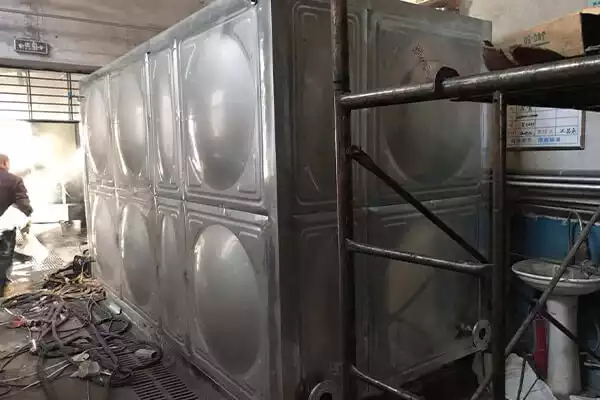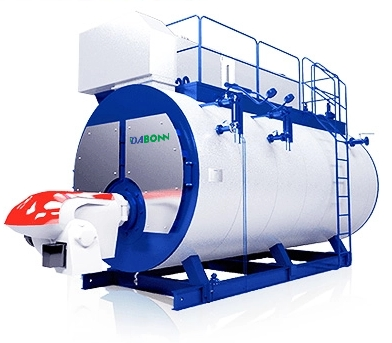
Introduction
A boiler expansion tank is a device that’s used to reduce the pressure in your boiler, water heater, or other appliance. It’s important you regularly inspect your expansion tank for leaks or cracks. To help you replace the expansion tank on your boiler. We’ll discuss how they work and show you how it’s done!
When to replace the expansion tank?
When the following three situations occur, you need to replace your expansion tank.
- When the expansion tank is cracked or leaking. If you notice any cracks in your expansion tank, it will need to be replaced immediately. This can cause water damage and other problems. If you do not replace it in time. This could cost you more money than just replacing the expansion tank itself.
- When there is a leak in the system. If you notice a leak in any here on your boiler’s pipes or fittings. Please call a professional immediately for help with repairs before it becomes worse than what it already is.
- When the expansion tank is over 15 years old, you should consider replacing it too. This is because older tanks have a higher chance of being damaged and leaking. If your system has a leak, it can lead to serious problems with your boiler and other components in your home.
What happens if you don’t install an expansion tank?
If you don’t install an expansion tank, your boiler will overheat. This can cause damage to the unit and result in expensive repairs. If you notice that your water level is too low or if your boiler doesn’t operate efficiently. It may be time to replace your expansion tank immediately.
What happens when an expansion tank goes bad?
When an expansion tank goes bad or is not functioning properly, there are several problems that can arise:
- The expansion tank is a critical component of your boiler. Your system won’t be able to operate correctly.
- The boiler will run out of water. Without the correct amount of water inside the tank and around its internal components. The heat exchanger won’t be able to get hot enough for steam production. That means no hot water!
- Overheating could result in damage to other parts of your system as well as dangerous situations like explosions (or worse).
Can you replace your own expansion tank?
Yes, you can replace your own expansion tank. However, it’s important to understand that there are some risks involved in doing so. And hiring a professional is always recommended. If you’re not sure how much experience or knowledge about boilers and plumbing systems you have. Hiring an expert may be safer for both yourself and others around you.
How to replace an expansion tank on a boiler?
Step 1: Turning Off the Power to the Boiler
Safety first! Ensure the safety of yourself and others by switching off the power to your boiler. This prevents any unexpected mishaps while you’re working on the expansion tank.
Step 2: Open the Access Panel on the Boiler
Locate the access panel on your boiler. This panel usually grants access to the internal components, including the expansion tank. Gently remove any screws or fasteners securing the panel in place. Set aside the panel in a safe spot.
Step 3: Remove the Old Expansion Tank
Here comes the pivotal step – removing the old expansion tank. You’ll likely need a wrench or pliers for this. Locate the connections attaching the tank to the system – these could be threaded connections or possibly connected by a flange. Carefully loosen and disconnect these connections, ensuring you have a bucket or towels handy to catch any residual water.
Step 4: Install the New Expansion Tank
Now it’s time to introduce the shiny new expansion tank to the equation. Position the new tank in the same location where the old one was removed. Make sure you follow the manufacturer’s instructions regarding proper orientation and connections.
Step 5: Reconnect the Connections
Attach the necessary connections to secure the new expansion tank in place. If using threaded connections, ensure they’re tightened snugly but not over-tightened. If there’s a pressure relief valve, don’t forget to reconnect it as well.
Step 6: Close the Access Panel
With the new expansion tank securely in place, put the access panel back on the boiler. Fasten any screws or fasteners you removed earlier to secure the panel. This step not only keeps things neat and tidy but also ensures the safety of the system.
Can you change the expansion tank without draining the boiler?
You can change an expansion tank without draining the boiler. But it’s not always recommended. To do so, you’ll need to remove the old expansion tank and install a new one. The process will take about two hours. About half of that time is spent removing the old tank and cleaning up afterward. The rest is spent installing your new one.
FAQs.
What is the life expectancy of a boiler expansion tank?
Generally, expansion tanks can last anywhere from 10 to 15 years. The lifespan of a boiler expansion tank varies based on factors such as usage, water quality, and maintenance practices. Regular inspections and servicing can help extend their longevity.
How often do you need to replace the expansion tank on a boiler?
To ensure optimal boiler performance, it’s recommended to replace your expansion tank every 10 to 12 years. Aging tanks can accumulate sediment, rust, and wear that hinder their functionality. Timely replacement prevents potential issues and safeguards your boiler system’s efficiency.
Why is my boiler expansion tank full of water?
Common causes include a faulty air valve, incorrect pre-charge pressure, or a failing diaphragm within the tank itself. This water buildup can negatively impact pressure levels and system efficiency, necessitating prompt attention.
How do you bleed a boiler expansion tank?
1. Turn off the boiler and allow it to cool. 2. Locate the air valve on the expansion tank. 3. Attach a hose to the valve and place the other end in a drainage area. 4. Open the valve to release any excess water and air. 5. Close the valve and ensure proper pressure in the tank. 6. Restart the boiler and monitor its performance.
How much does it cost to replace an expansion tank on a boiler?
On average, you might expect to spend anywhere from $200 to $600 for the replacement, including labor and parts. It’s wise to obtain quotes from reputable professionals to get a precise estimate for your specific situation.
Conclusion
If you’re looking to replace an expansion tank, it’s best to call a professional. The job is not as simple as it seems and can be dangerous if not done correctly. If you choose to do this yourself, make sure that you have all the necessary tools handy before starting any work on your boiler system.
Get your best price
Quickly compare 3 FREE quotes
- Engineer quick quote
- The overall delivery speed is fast
- Financial choice
- Low installation costs and cost savings
25 years+ of boiler R&D
More than 20 innovative technologies
